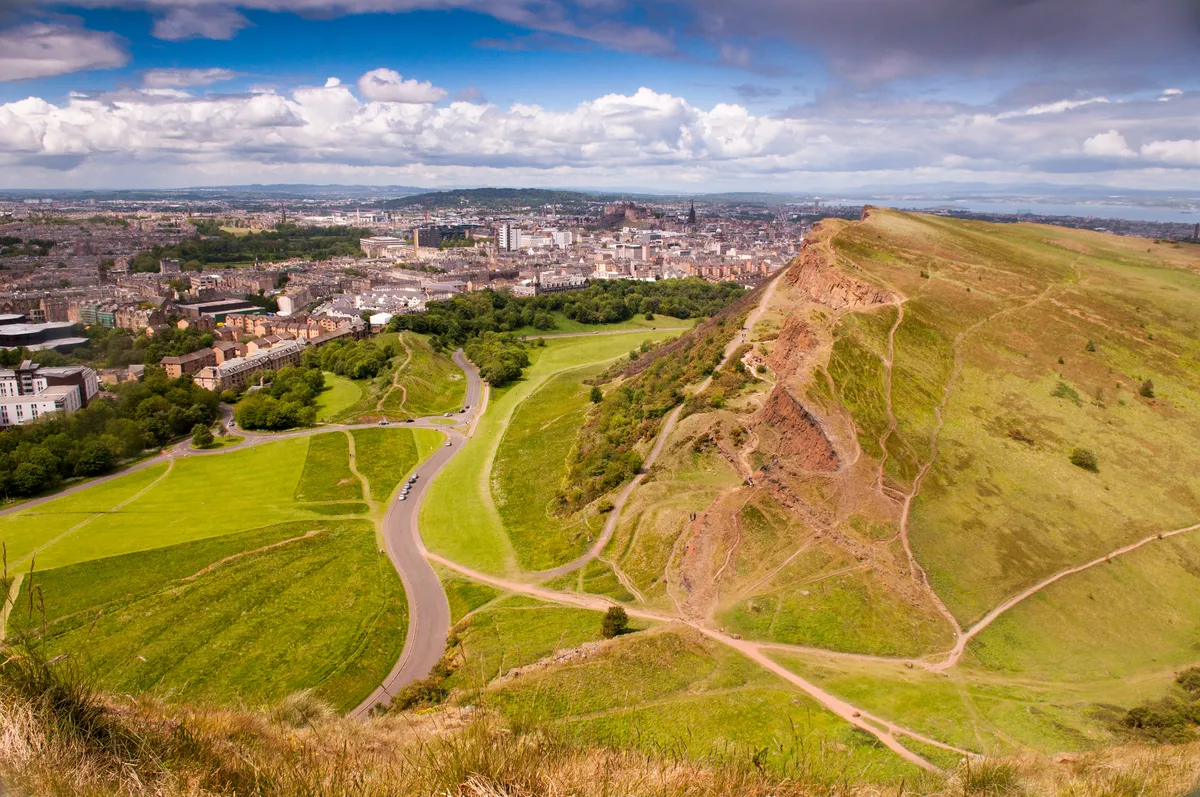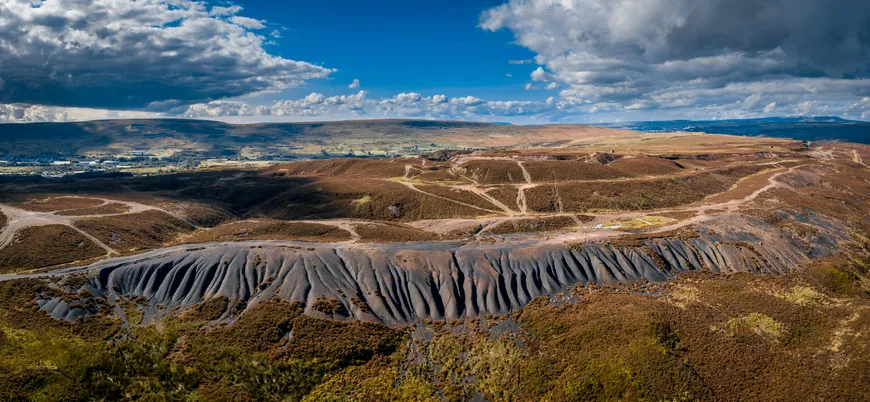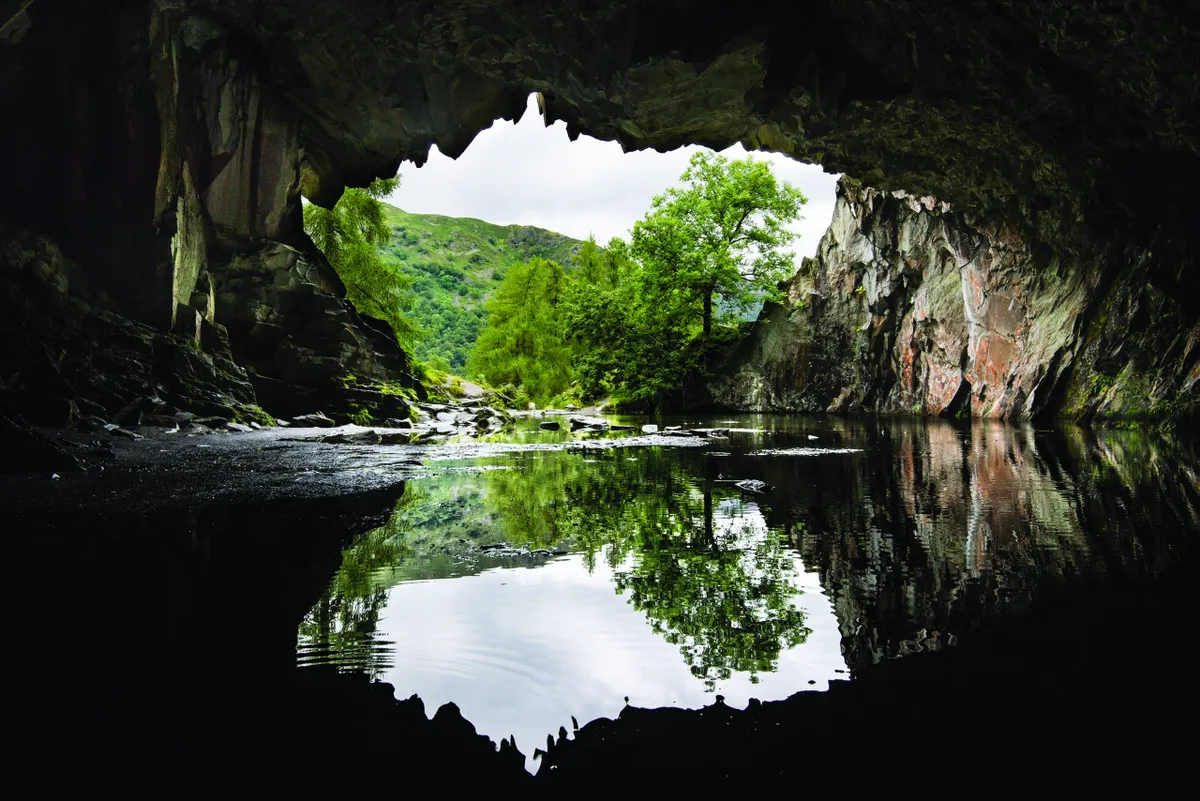Some rocks are burnt deep into the British psyche. The creamy chalk of the White Cliffs of Dover. Or the black basalt of the Giant’s Causeway in Northern Ireland, tumbling steeply from green pastures into the stormy chop of the North Atlantic Ocean. And yet, beyond their mere beauty, symbolism and mysticism, the rocks of the British Isles have shaped us. They have defined where we live, how we live and who we are. They power our everyday lives and provide shelter from the infamous British weather.
The rocks that comprise these islands contain a rich story of the evolution of Earth; of the birth and death of oceans and mountains over 4.5 billion years. When I, a geologist, hold a pebble in my hand, gaze at the shape of our coastlines, or study the bricks of our homes, I’m trying to read this ‘rock record’. We geologists are trained to use our deep-time perspective to understand how the long-term construction, deformation and destruction of land has provided us with a rich, seemingly unending range of life-critical resources.
These rocks form the fabric of our existence, so here I celebrate some of the unsung ‘rock stars’ of British geology, shining a light on the many ways in which they have made us.
BASALT: The volcano at the heart of Edinburgh
Edinburgh seems an unlikely place to find a life-threatening geological hazard. But if you had been standing on Arthur’s Seat – the craggy hill that punches through the city – around 345 million years ago in the Late Carboniferous, things would have been very different. For here, within the tranquil green spaces of Holyrood Park, lies the head and exposed heart of an ancient volcano, now eroded by time and touch. The evidence is unmistakable. Tens-of-metres-thick layers of basalt reveal now-cooled lava flows.

Hundreds of millions of years after these geological upheavals, these volcanic rocks were fought over by kings and other military leaders. They prized the strategically important high points these rocks created by virtue of being crystalline, and thus more resistant to weathering and erosion than the softer sedimentary rocks in which they are encased.
- Discover more in our guide to Britain's most amazing extinct volcanoes
COAL: The rock that fuelled a revolution
Walking along a windswept gritstone edge in Derbyshire, surrounded by purple heather, your eye is caught by jet-black rock fragments weathering out of the soil. Pick up this rock and it crumbles in your hand, releasing fragments of leaves and bark. This is coal.
Around 300 million years ago, in the Late Carboniferous, what is now known as Derbyshire lay 3,000 miles further south, just over the Equator. In those days, much of the British Isles was covered by lush plants thriving in sub-tropical swamps. As the plants died, they were buried, squeezed and heated, eventually forming coal.
By the 19th century, if you looked east from the Derbyshire moorland, you would see billows of smoke rising from gritstone chimneys in the valleys of Yorkshire. These belonged to power stations and cotton mills, all fuelled by coal. The burning of coal powered not only the industrial revolution of our past, but also the technological revolution of our present – and the intensifying climate crisis of our future.
Coal has also left an indelible social mark on Britain. The hard labour involved in extracting it from deep mines across the country imprinted a culture and attitude on the people of the coalfields.

SALT: Tropical seas to frozen roads
Driving across the flat Cheshire Plains, you spy mounds of pinkish-grey rock on the distant horizon. Tens of metres tall, they dwarf the industrial buildings around them. And as you approach one, there is the unmistakable tang of salt in the throat and nose, as if you are nearing a stormy sea.
Around 255 million years ago, during the Lopingian Epoch, you would have needed a boat to undertake this journey, not a car. Because at this time, the British Isles, along with much of what is now Europe, was covered by the Zechstein Sea. Because the Britain Isles then lay just north of the Equator, it was warm and dry. Periodic evaporation – or ‘desiccation’ – of this sea caused a layer of rocks called ‘evaporites’ to form. The most common was ‘halite’ – a rock better known as salt.
Halite and other evaporites with exotic names, such as carnallite and sylvite, have been excavated from below the Cheshire Plains for over 150 years. We don’t usually see these rocks at the Earth’s surface because they dissolve in rain, although several hundreds of kilometres of mine workings lie below the Cheshire Plains, where the salt is removed by hand and machine. Beyond their culinary value, these rocks are economically important; they de-ice our roads in winter and some are used to fertilise crops.
Salt will hopefully play a positive role in our economic and climatic future. Its ability to trap fluids and gas make salt caverns ideal sites to store the greenhouse gas CO2, as well as nuclear waste, hydrogen and compressed air, all likely to be important energy sources powering a low-carbon economy.
CHALK: Created from a billion souls
Ice-cold water laps at your toes. You take a step in, gasp, and then look north-eastwards, towards the White Cliffs of Dover. Although shimmering white and ice-like, these rocks tell the story of a very different place, at a much warmer time.
Unlike sandstone and basalt, chalk is a rock that is born, not made. During the Late Cretaceous, 66–100 million years ago, the UK was covered by a warm, clear, almost tropical sea that teemed with life. Billions of microscopic green algae and animals called coccoliths floated in the shallow waters, feasting on sunlight. When they died, their calcium-carbonate-rich skeletal remains sank to the bottom of the ocean, eventually being buried and compacted to form the chalk that so defines the British landscape.
As this chalk slowly subsided beneath the seabed and bacteria got to work, silica-rich ‘flint’ formed. This hard, dark rock was eventually liberated from its soft, white host by the action of time, wind and waves. Thousands of years ago, this same, unyielding rock was being crafted into hunting arrowheads by Palaeolithic humans. What started off as life was eventually used to bring death.


SLATE: A rock that roofed the world
The landscapes of North Wales and the Lake District share a wild, natural beauty, with rolling mountains of bare rock, river-swept valleys and glistening lakes. But look closer. Some of the most remarkable scenery in the UK has a more ravaged look, defined by sharp cliffs that flank oversized holes, unnaturally blue, box-shaped lakes, and human-made rivers trapped within metal pipes. This seemingly natural scenery bears the indelible scars of us, for these are the markings of slate quarries. Slate has been quarried in these isles for almost 1,000 years. At its peak in the late 19th century, in Wales alone, 280,000 tonnes of roofing slates were produced every year.
To understand the origin of slate, now found in some of our highest landscapes, we dive into the seas of the Palaeozoic Era, 350–500 million years ago. Here, mud accumulated in the quiet waters, eventually being buried, heated and squeezed to form mudstone and eventually, slate. Slate is a metamorphic rock – but only just. Look closely enough and the ghosts of now-extinct sealife remain visible, as do the original, millimetre-thick layers or ‘laminae’, recording the sedimentary snow that dusted the ancient sea floor.

LIMESTONE: Creating legendary caves
The narrow steep-sided valley looks out of place among the low rolling hills of north-east Derbyshire. Poking out of the valley side, here at Creswell Crags, is a pale-grey cliff of limestone, dotted with little doorways. You enter one of these rocky entrances, and as cool air strikes your face, you are transported back several tens of thousands of years, during one of the many last Ice Ages that shaped our land, sitting among nomadic people who occasionally called this place home. Rock caves such as this have long provided refuge for humans, sheltering us from the worst of the weather and protecting us from hyenas that used to roam this part of the north Midlands.
Limestone was deposited about 250 million years ago, in the latter part of the Permian Epoch. Deposited by ancient sea creatures in a shallow, warm tropical sea, and subsequently chemically modified by a process called dolomitisation, this is ideal cave-making material. Carbonate rocks, such as limestone or dolomite, make cave-making easier, dissolving naturally on contact with carbonic acid, the product of rainwater dissolving CO2 from the atmosphere. Erode this landscape with rivers cascading from the snouts of ice sheets that extended across much of the UK, and you have the perfect recipe for caves.
The unique properties of the magnesium limestone not only left behind a landscape well-suited for human occupation, but the thin, lime-rich soil that develops as it weathers provides a rich habitat for wildflower meadows. And quarrying of these rocks produces hard-wearing bricks that have built our cathedrals and roads, and enriched our soils. A landscape built by both fire and ice, ultimately protecting us from both, and providing for us, even now.


